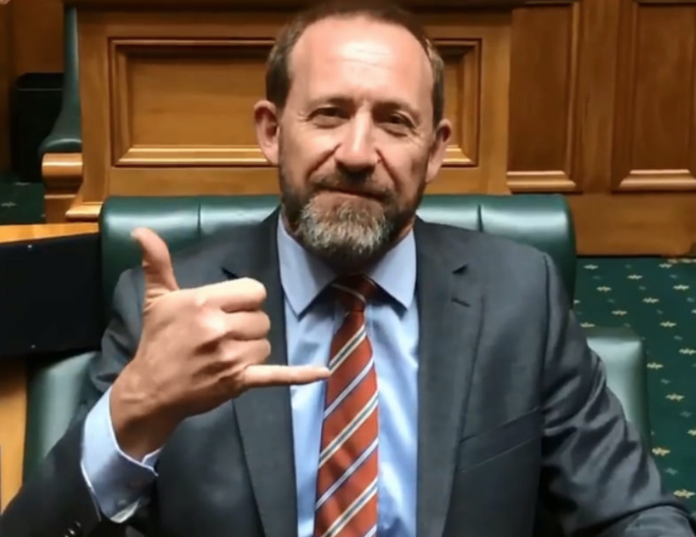When the Labour Party came in power in 2017, leading a coalition government, it brought with it an understandable strong distrust of the Ministry of Health or at least its leadership. At that time Labour appeared favourably disposed towards district health boards (DHBs) particularly in the context of their increasing tension with the Ministry’s top-down leadership culture.
However, Labour’s confidence in DHBs also dissipated; partly Ministry influenced but more so from external commercial influence. This was despite the fact that in 2001 Labour in office created the DHBs as crown entities responsible for geographically defined local populations and in December 2018 had appointed new Board chairs and deputy chairs more diverse than they replaced.
Labour was also oblivious to the quality of care and fiscal management advantages of clinical leadership, especially when distributed through the wider clinical workforce that had been supported to varying degrees by previous health ministers of both main political parties.
Labour’s Annette King and David Cunliffe were standout in this respect. This obliviousness compounded Labour’s distrust of health system leadership making it vulnerable to simplistic external influence driven more by soundbite than substance.
Bring in the business consultants
So what did Labour do? It turned to external business consultants and, in particular, Ernst & Young (EY). DHBs that questioned the viability of poorly thought-out central government positions and distributed clinical leadership were to be got rid of and ignored respectively.
In the over 30 years I’ve been involved in the health system I’ve not seen a government more dependent on and influenced by business consultants since the earlier 1990s when the National government attempted to run the system on competitive business principles.
Ironically the increasing use of business consultants by government was an early concern of Labour ministers when taking office in 2017. The following year State Services Minister Chris Hipkins abolished a cap on public servant numbers. With justification he argued this had perversely fed an increased reliance on expensive contractors and consultants.
EY revenue stream
Based on information obtained under the Official Information Act NZ Heraldjournalist Kate MacNamara has published a timely article (3 December) on business consultant costs in Labour’s massive restructuring of the health system: https://www.nzherald.co.nz/business/health-system-reform-transition-unit-to-spend-18m-on-consultants-this-year/CE5E2VE5AUAKNUUNTGW7FUN46I/. This restructuring takes effect next July.
MacNamara reports that the Transition Unit set up in the Department of Prime Minister and Cabinet to implement the health restructuring will have an estimated spend $18 million (69%) of its $25.96m budget this financial year (2021-22) on contractors and consultants. The head of the Transition Unit is EY senior partner Stephen McKernan.
But this massive disproportionate expenditure is not evenly spread among these lucky contractors and consultants. The single largest beneficiary of the contractor spending to date is EY. Immediately questions of ethics and probity arise. While this might not reach the legal threshold for conflict of interest, in my view it does ethically and morally. It certainly has an unseemly smell about it.
Probing parliamentary questions from National Party health spokesperson Dr Shane Reti, as reported by MacNamara have revealed that EY was paid or owed $5.7 million by the Transition Unit for work to the end of August 2021. It is not clear whether this included or excluded McKernan’s remuneration.
Compare this $5.7 million paid to EY with the nearly $1.2 million paid to the combined five significant contractors and consultants over the same period of time. These five businesses in total received around 21% of what EY on its own earned.
The second biggest beneficiary of Transition Unit funding, although minor when compared with EY, raises another potential conflict of interest issue. Finora Management Ltd was paid or owed $323,700. It is owned by Chad Paraone, who was recently made acting chief executive of the interim Māori Health Authority.
The other contractors and consultants are Sapere Research Group, Senate Communications, Sue Suckling Holdings Ltd, and Arkus Communications.
Experience of business consultants in health
McKernan’s defence to the NZ Herald was that his unit was delivering a programme that is “… big and ambitious and requires significant transformation to the existing overarching health system structures, macro policy, [and] legislative and funding settings. It also requires new models of care, new commissioning approaches to be developed, significant change management [and] transition and implementation planning.”
My kindest description of this defence is vacuous rhetoric. The overwhelming experience of external business consultants in the public health system has been underwhelming at best. At worst (but not uncommon) it has been woeful and destructive.
EY’s own experience in New Zealand’s health system is limited (largely McKernan himself) and without credible runs on the board. Its main ‘claim to fame’ was an appalling misuse of national nurse staffing data in 2020 to absurdly claim that Canterbury DHB employed too many nurses and therefore was mismanaging its finances.
This amounted to a hatchet job led by McKernan in his EY role to help moves within central government to bring down CDHB’s senior management team which was considered to be too close to its health professional workforce. It worked.
Now we have EY driving the abolition of DHBs without any substantive understanding of what will replace their roles and functions in ensuring the provision of primary and community healthcare.
Nor is there a realisation of the risk of the impact on improving integration between integrating the continuum of care between community and hospital. This is an effective way of controlling the growth of acute hospital admissions which is one of the biggest cost drivers in the health system.
The EY dominated Transition Unit has developed new health system indicators. They supersede the former National government’s health targets which were deficient because they only applied to those things that could be counted (a small part of what the health system does).
Replacing a misleading measure of accountability with indicators that fudge and omit is no advance. But it indicates the level and type of thinking sitting behind the restructuring.
Traffic intersections or expressways
Compounding the situation is that this is all happening in the middle of a pandemic. Health sector experience and expertise would say: cultural leadership change trumps structural change for sustainable system improvement; don’t dismantle a structure until there is a clear sensible design of what will replace it; and don’t restructure the bodies responsible for the provision of community and hospital healthcare during a crisis such as a pandemic. This is ABC stuff.
But this is not what EY advises government. In fact, even a mild (ineffective on its own) measure that has attracted the interest of Health Minister Andrew Little to extend the contracts of DHB chief executives for a few more months after 30 June is reportedly being opposed by McKernan.
Unfortunately DHBs are not able to give voice to the failure to comprehend the ABCs of health reform because of the strong government control they are under. Disappointingly, in a highly unionised workforce, the health unions have been overall complicit with this failure much to the detriment of their own members. High unionism benefits health systems but not when their leaders are largely mute on matters such as this.
It is tempting to say that engaging business consultants to call the shots in implementing health restructuring is akin to engaging panel-beaters to design traffic intersections. I’m confident Transport Minister Michael Woods would never contemplate the latter so why is Andrew Little doing the former?
However, given the enormous scope of Aotearoa’s health system, I suggest a more appropriate analogy is akin to engaging panel-beaters to design an expressway (a joke for the litigious minded)?
Ian Powell was Executive Director of the Association of Salaried Medical Specialists, the professional union representing senior doctors and dentists in New Zealand, for over 30 years, until December 2019. He is now a health systems, labour market, and political commentator living in the small river estuary community of Otaihanga (the place by the tide). First published at Otaihanga Second Opinion





A continuation of Labour’s infatuation with the zombie free market that knows the price of everything but the value of nothing.
Putting panel beaters in charge of designing freeways captures it.
We have the illusion of driving to freedom but really its a delusion because we are creating an ever expanding source of profit for a privatised health is wealth system.
Keep the existing health boards and put the health professionals not parasites in charge of reforms.
Well that was a bloody depressing read. More ideological clap trap dictating policy.
This is the real problem with neo-liberalism it believes it’s own hype. It thinks it’s ideological purity will always find the right solution, but after 40 odd years all we are seeing is a massive transfer of wealth up, an the rapid decline of any public good.
First of all, I would like to thank you Ian a lot for the always interesting and pertinent opinion pieces you write on the subject of healthcare in New Zealand. Prior to moving to New Zealand and only keeping myself to a ‘simple’ rural GP job so far, I was a health systems researcher for 10 years in my home country, contributing to national health system analyses, notably for the WHO.
There are a few ‘entry-level’ policy design features that normally should be the most basic check-list a developed country should fill when they try to reform their health system:
1. the system must answer to the needs of the population. Nowadays the generic and always answer is chronic diseases and multimorbidity in all developed countries, but I think there are some specific for New Zealand as well, such as healthcare for people living in ‘deep’ rural conditions, teenager/young adults mental health, early pregnancies, distrust in the system by deprived Maori citizens, education to healthy living, and probably many more.
2. the reform must be conducted truly bottom-up, from the needs of the frontline to the central ruling entities and not the contrary.
3. the reform should have a look of what has been successful or not elsewhere in countries of same size and GDP (Denmark, Finland, Norway, Singapore, Croatia, Ireland).
4. there can’t be a reform without discussing the funding. Because whatever you put as an administrative model in your reform, the physical or institutional actors of the system will bend your new rules to get the most funding possible. Funding rules are hundreds times more powerful to shape a healthcare system than bureaucratic / reglementation rules.
I do not see any of these 4 policy design recommendations in the current reshaping discussion by the Transition Unit and the overall plans by A. Little:
1. I have not read anything about a goal-oriented reform that would try to address these or those unmet needs. So it is bound to fail. Some would argue the Maori Health Authority should address the Maori problem, but we still do not know what will be the extra range of action of this Authority compared to Health NZ. Please allow me to also be skeptical about how academic-trained Maori understand the issues of deprived Maori (especially when you consider the often abysmal scientific quality of papers these academic-trained Maori write in NZMJ for example).
2. This is a top-down reform. So it is bound to fail. As good high-level consultants as they are, EY will produce what is awaited from them: a gentle pat in the back of the Ministry (otherwise no more future contracts), half-baked health policies that keep the status quo running (rather than taking the risk of being disruptive), recommendations for their ‘friends’ (understand former or futur employees/partners) to hold key positions in the new system so they get the inside knowledge and can turn it into profit by selling it to other clients. I mean, how can one honestly think that rearranging chairs on the upper sunlounge decks will help people running the coal engine at the bottom of the ship?
3. I have not heard anything yet about updated comparative policy studies between current NZ healthcare system and the ones of countries of the same size. So it is bound to fail. Denmark has probably the strongest healthcare system in the world, with a full emphasis on primary care, timely and adequate access to secondary care, a very good health IT infrastructure, and has a good retention of healthcare professionals (compared to many other nations). Denmark does not have deep rural areas as NZ does, but then we have Norway to help us design this… Guess what? Denmark’s successful model is based on regional agencies rather than a national one.
4. A. Little said funding will be sorted after the healtthcare reform. So this is a reform with money spent in consultant fees and meetings etc. for nothing at all. If funding issues are not put at the front of the discussion, this probably indicates that this ‘reform’ is basically a show-off with no true purpose behind it.
If I was still in academic in this field of health systems research / health policy, I would probably use Little’s reform as the perfect example of everything to avoid doing while you try to change the shape of your healthcare system. It is a textbook catastrophe. However, even if this reform is bound to fail, it does not mean it will be inevitably fail. In the end, reforms have to be applied by the workforce. And there are several historic examples of how half-baked or useless reforms turn sometimes as a success thanks to the workforce.
I recently attended the Health Care Transition Unit ‘roadshow’. Yes, it was a show, and only that. Different presenters just spent their time introducing themselves (once in Te Reo, once in English), their positions in the different commitees (as if it had any impact on the audience) and then just spent their slides laying down keywords after keywords without any meaningful, practical content behind that. Not one policy was shown with a practical plan to be started in July, not one at all. I cannot imagine they will be ready in July at all, with so little content so far. This is so typical of EY and other consultants: we put keywords down, everybody thinks we have worked, but when it comes down to practical matters, whoopsie, mission is already finished and sorry we don’t have time to help you implement the some brillant keyword-policies we designed for you…
I so agree with your blog post Ian, how can other people not see it? Is political cowardice the price of their skin in the game?
Comments are closed.